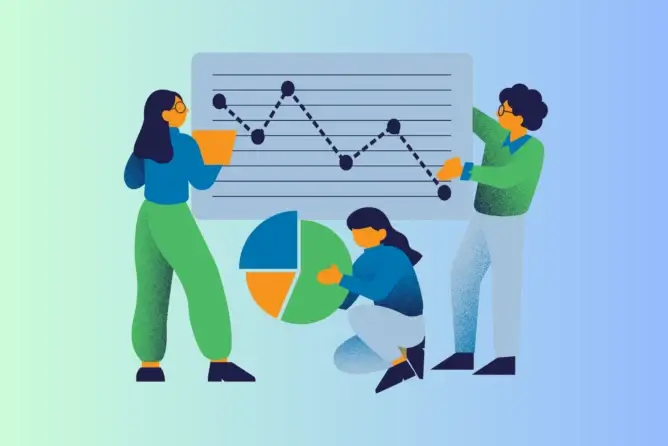How to Find Your First 100 Affiliates and Grow Your Program

In this article
First Customers, Then Affiliates
Finding the First 100 Affiliates
Making the Offer Worth Considering
Onboarding as the Breaking Point
Looking Ahead
Watch the full episode on YouTube
In the new Tapfiliate podcast episode, hosted by Anton Zelenin, Julian Henrichs, an Affiliate Marketing Strategist with more than a decade of experience across European markets, shared his perspective on what’s next for affiliate programs.
From the rise of “Netflix-style” recommendations to the gritty work of recruiting and onboarding affiliates, he broke down what brands really need to get right if they want to grow.
Affiliate marketing has a reputation for being “old school.” Slow, manual, relationship-heavy. However, Julian says this image is starting to crack.

Instead of manual matchmaking, new tech is bringing algorithmic recommendations to the channel. Just as paid search and social shifted to automated bidding years ago, affiliate is finally learning to use data to connect users, publishers, and brands more efficiently.
First Customers, Then Affiliates
Julian does not mince words: programs fail when they skip the basics.

Affiliates are not there to validate your product. They are there to amplify it. If your funnel is unproven or your brand reputation is shaky, no serious publisher will waste time sending traffic that may never convert. Early traction, such as a handful of positive reviews on GetApp or Capterra, genuine discussions on Reddit, or a few case studies and testimonials, does more to convince affiliates than any commission promise. It shows that customers are sticking, which means partners have a chance of earning.
Finding the First 100 Affiliates
Once the customer foundation is there, the search begins. And it is rarely glamorous.
Julian compares it to detective work: digging into competitor backlinks with tools like Ahrefs or SEMrush, scrolling through YouTube to spot niche creators, and emailing bloggers who already write about similar products. These prospects already understand affiliate marketing and will not need a crash course.
The temptation is to chase big media sites. However, in reality, small publishers can be more valuable in the beginning. Micro and nano affiliates, such as a blogger with 5,000 loyal readers or a YouTuber with 20,000 engaged subscribers, may not drive massive traffic today, but they are responsive, easier to build relationships with, and more willing to experiment.
For instance, brands like Surfshark built their early momentum exactly this way. Those small partners later made it easier to catch the eye of larger affiliates.
Making the Offer Worth Considering
High commissions alone don’t make a program attractive. Affiliates are looking at the bigger picture:
- Reputation: are people already talking about your brand in a positive way?
- Flexibility: Do you reward only final sales, or also leads, demos, or free sign-ups?
- Support: Are you responsive, easy to reach, and open to discussion?
Startups have a hidden advantage here. They can be more agile and personal, replying to affiliates others might ignore.
“There are big brands that won’t talk to small affiliates sending 500 clicks a month. But if you’re just starting, those 500 clicks can matter a lot.”
Onboarding as the Breaking Point
Getting affiliates through the door is one thing. Keeping them active is another.
“Maybe one in ten will add your link right away. The rest need a nudge. Sometimes it is just a reminder – they wanted to do it, but life got in the way.”
This is where onboarding separates successful programs from dead ones. Affiliates need more than a tracking link. They need ready-to-use marketing assets, examples of top-performing campaigns, and simple instructions on what to promote first. A welcome email is not enough. Follow-up calls or personal check-ins often make the difference between an inactive signup and a productive partner.
Startups can shine here. While big brands may ignore affiliates sending modest traffic, smaller companies can afford to give those publishers more attention. That support builds trust and often pays off when those “small” affiliates grow into authority voices in their niches.
Looking Ahead
The question keeps surfacing, especially as AI-driven search and large language models change how people discover products. Blog traffic is harder to win, click-through rates are shrinking, and cookie-based tracking grows less reliable.
“It will not always be click, click, click and the user lands on your site. We need new models for attribution and payment, and stronger direct relationships with publishers.”
Julian believes affiliate marketing is not dying but evolving. The fundamentals remain: trust, relationships, value. What changes is how discovery and tracking happen. Brands may need to invest more in referral and loyalty programs, in user-generated content, and in direct partnerships with creators who bring their own audiences rather than relying on Google alone.
Affiliate marketing is not a set-and-forget channel. It is a long game of proving value, recruiting wisely, onboarding with care, and staying open to new models of attribution and reward.
Watch the full episode on YouTube
If you need more details or just prefer video format, don’t hesitate to watch the full episode of our podcast on YouTube.
Ready to build an affiliate program that lasts?



















